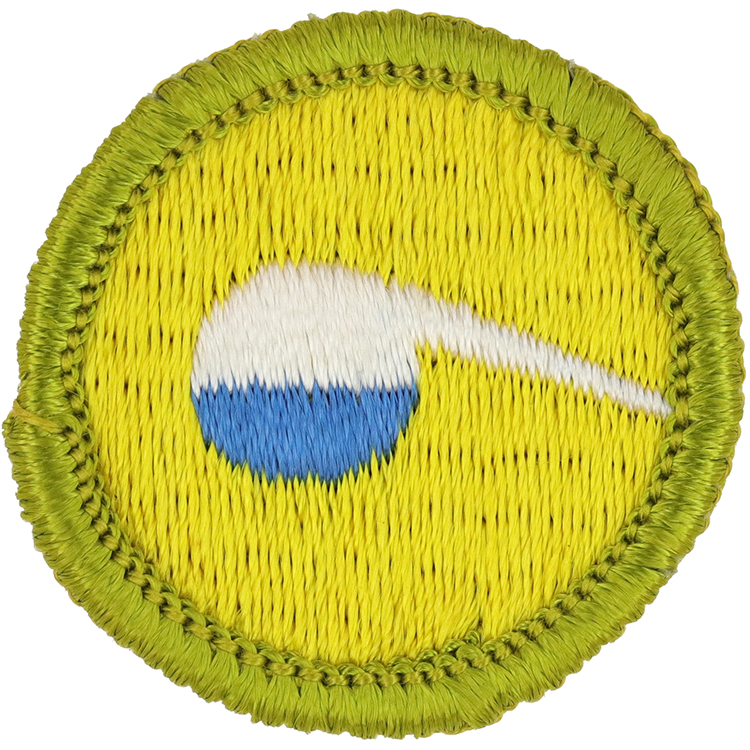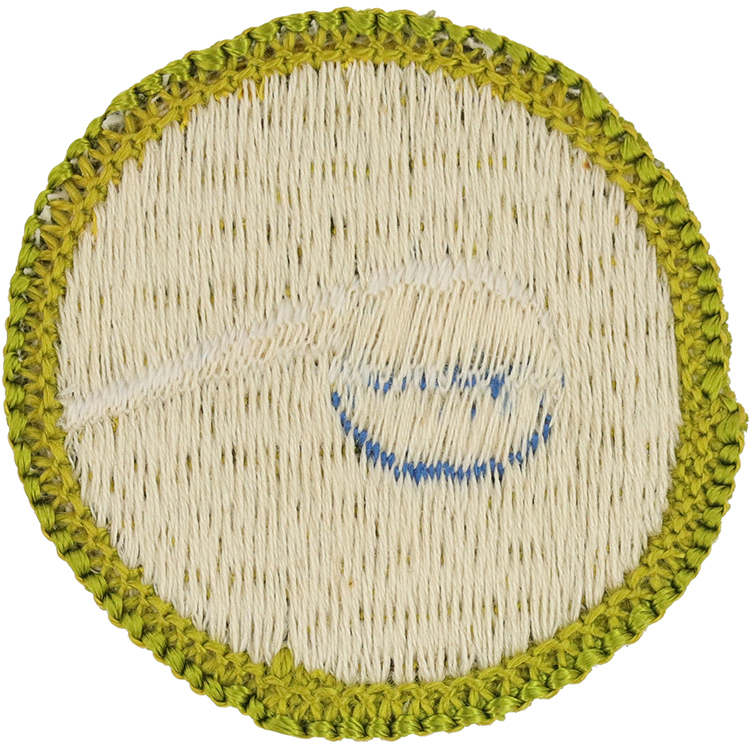
Fig. 1: Chemis-G-Front
- Embroidery: Cotton thread
- Border: Merrowed

Fig. 2: Chemis-G-Reverse
- Back: Starched cloth
Item Name: Chemistry 1969 - 1972
Item ID: Chemis-G
Collector Rating: 1
Requirements September 1958 until June 1972
1. Do one of the following: (a) Collect ten compounds or elements found in the home and write the common name, chemical name, and formula or symbol for each. (b) In company with your counselor, follow a route selected by him and name fifteen compounds or elements found in nature or in objects seen along the way.
2. Perform experiments to illustrate four of the following chemical reactions: (a) neutralization, using an indicator; (b) precipitation of a solid from solution; (c) evolution of a gas; (d) combination of two elements to form a compound; (e) replacement of a metal in a salt by another metal.
3. Demonstrate and discuss the chemistry of a candle flame. Relate this knowledge to the burning of wood as in a campfire. Explain how water and sand act to extinguish campfires. Tell what methods are recommended for extinguishing fires involving: cooking fat, oil or gasoline, electrical equipment. Explain how each functions.
4. Explain the changes that occur in nature's (a) water cycle, (b) carbon-oxygen cycle, (c) nitrogen cycle. Describe the chemical reaction that takes place in carbon monoxide poisoning.
5. Explain what is meant by "hard water" and "soft water". Do one of the following: (a) Perform experiments to show how the hardness of water may be reduced. (b) Demonstrate the action of soap and synthetic detergents in hard water and explain any differences observed.
6. Tell how the chemical properties of iron, aluminum, copper, and silver influence their usefulness as cooking utensils, as tools, or for other purposes around the camp and home. Describe several means of preventing metal corrosion.
7. Do one of the following: (a) Visit an industrial plant that makes chemical products and describe the processes involved. (b) Visit a laboratory or a commercial establishment using chemical materials and find out how and why the materials are used. (c) Visit an experimental farm to learn how chemistry is meeting local problems of soil fertility and pest control. (d) Collect samples representing either the manufacture of chemicals from a common source, such as salt, sulfur, and petroleum, or the use of chemicals in the manufacture of a class of products such as textiles, drugs, or metals, Be prepared to discuss with your counselor the chemistry of the subject chosen.
8. Explain how principles expressed in the Scout Oath and the Scout Law are observed by scientists.

